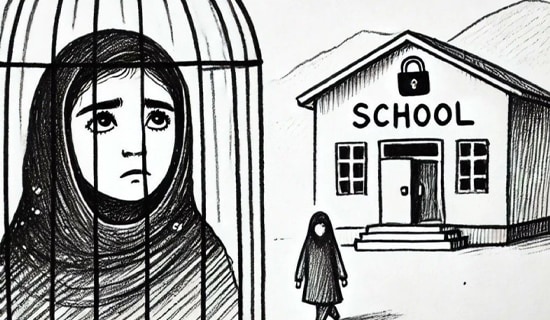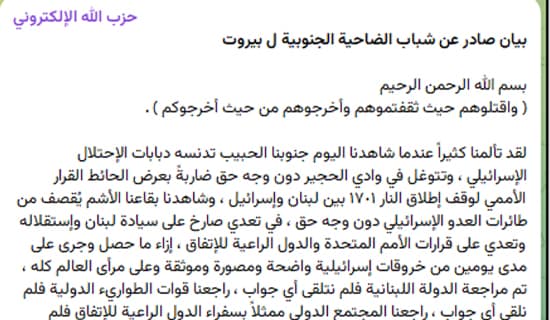
Introduction
This is a book review of Tehreek-e-Jihad Aur British Government - Ek Tahqeeqi Mutaleya ("The Movement of Jihad and the British Government - An Investigative Study"), written in Urdu by Khushtar Noorani and published by the Idara Fikr-e-Islami, Delhi. The 256-page book was published in 2014 and was priced at 250 rupees for hardback and 160 rupees for paperback editions. Its focus is on the jihadi movement during the first quarter of the 19th century, as led by two leading Indian Islamic scholars: Syed Ahmed Barelvi and his disciple Shah Ismail Dehlvi, i.e. of Delhi. The author, Khushtar Noorani, is a well-known Barelvi scholar.
The surname "Barelvi" denotes that the bearer belongs to the northern Indian town of Bareilly, currently the headquarters of the Barelvi School of Sunni Islam. While the Barelvi School (propounded by Ahmed Raza Khan Barelvi, 1856-1921) approves of Sufism and its syncretic practices such as music, singing, and dancing at dargahs (shrines of Sufi mystics), but can be as deadly as the Islamic State (ISIS). An easy way to understand what the Barelvi School stands for is this: Barelvi clerics across the world advocate exactly the same theological principles regarding blasphemy for which ISIS terrorists shot dead Charlie Hebdo staffers in Paris in 2015.
As seen in numerous Taliban videos in recent years, both Syed Ahmed Barelvi and his disciple Shah Ismail Dehlvi are heroes to jihadis in Pakistan and its neighborhood. Their jihad was not focused against the British, who were in power at that time; it was focused against the Sikh rulers of Punjab, which was under the rule of Sikh ruler Maharaja Ranjit Singh (1780-1839, ruled 1801-1839).
Author Noorani writes: "Muslims were generally troubled by the atrocities by the Sikh rule. Therefore, Syed Sahab [i.e. Syed Ahmed Barelvi] began the practical jihad against the Sikhs, in which, along with the hundreds of mujahideen of India, different Muslim tribes of Sarhad [now Khyber Pakhtunkhwa in Pakistan], who numbered in the thousands, participated with full fervor and enthusiasm." This jihadi movement would come in conflict with the British colonial rulers after Punjab came under British rule in 1849. Noorani adds: "However, this movement remained alive in some form or other in Sarhad from the first quarter of the 19th century to the beginning of the 20th century... Different centers existed in different parts of British India, from which men and finances for the jihad were provided."
After India became independent in 1947, a number of Islamist writers tried to look back at the role of the jihadi leaders led by Syed Ahmed Barelvi. Noorani sees among such writers a) those who saw this role as aimed merely at ending the British rule, and b) those describing it as jihad against the Sikh rulers. While both of these groups of writers failed to narrate the accurate picture of the jihadi movement, fame accrued to the first group. Further, he sees: c) those who described the jihad as anti-British and fought against the British rule at the level of scholarship and practicality, and who became heroes after Independence - even though the jihadi movement led by Syed Ahmed Barelvi was religious. Noorani sets out this context in order to explain the purpose behind his book: to accurately describe the jihadi movement that began in the early 19th century. He notes that at the end of his research he concluded that the jihadi movement's real goal was not the end of the British rule, and that it did not as a "movement" participate in India's struggle for freedom.
In writing this book, Noorani relied on books and magazines in Persian, Arabic, and Urdu available at libraries in India, especially libraries at Islamic institutes, and obtained books from Pakistan that were unavailable in India. His book meets international academic standards of research rarely seen in Urdu.
In addition to an introduction by the author and an appendix, the main sections of the book are: a) "Syed Ahmed Barelvi - An Introduction"; b) "Historiography of the Jihadi Movement - An Assessment"; c) "The Jihadi Movement and the British Government"; d) "The Jihadi Movement And the Revolution of 1857"; and e) "Discovery of an Important And Unique Manuscript."
Syed Ahmed Barelvi - From Sufi To Jihadi Commander
An interesting point that emerges in the book is that Syed Ahmed Barelvi's movement, which opposed shirk (polytheism) and bid'a (innovation in Islam), and later his role in jihad, was described as a "Wahhabi movement" in the tradition of Ibn Wahhab of Saudi Arabia - even though he himself initially belonged to the Sufi tradition. As a youth, he was never inclined to study, stopped his studies at madrassas many times, and instead engaged in sports, including swimming, and later joined in the irregular armed gangs of Ameer Ali Khan that stole and looted in the Malwa-Rajputana region and were often hired by powerful individuals to target their opponents. However, he became a Sufi, to whom others would swear the bai'yah (oath of allegiance) - among them Shah Ismail Dehlvi, later to become practically deputy leader and army commander of the jihadi movement under Syed Ahmed Barelvi.
From the town of Bareilly, Syed Ahmed Barelvi organized an army of volunteers in 1820-21, to fight against the Sikh rulers. During these two years in Bareilly, before he openly called for jihad, his spiritual followers asked him why, as a Sufi mystic, his mind was not focused on prayer; he replied: "There is no better prayer than jihad; therefore now the preparation is for jihad; so you too get engaged in preparation for jihad."
Before waging jihad, Syed Ahmed Barelvi and Shah Ismail Dehlvi were fully spiritually transformed, away from the Sufi influences, particularly after performing the Hajj in 1821. During the Hajj, Syed Ahmed Barelvi formally became a ghair muqallid - the opposite of a muqallid, or one who follows at least one of the reputed classical Islamic jurists.
On January 17, 1826, Syed Ahmed Barelvi led a volunteer army of 500 men from Bareilly to Kabul, via Sindh and Kandahar. From Kabul, his jihadi army journeyed through the Khyber to Peshawar, where he was welcomed by the local people. There, he advocated a guerrilla strategy against the Sikhs. On December 21, 1826, the jihadi army ambushed unsuspecting Sikhs during night at Akora (in present-day Khyber Pakhtunkhwa province), and were emboldened by their success. A second attack was carried out at Hazro (in present-day Punjab province), and Sikh shops were looted. Noorani notes that some Islamic scholars considered these ambushes to be "against humanity and against the shari'a." The Sikh army general, Sardar Budh Singh, wrote to Syed Ahmed Barelvi that such attacks were a matter of shame and dishonor, and added: "If you are a real Syed [title used by those who trace their lineage to the Prophet Muhammad] and a respected elder, then come out and fight in the open. By fighting from hiding places, neither the religion nor you will benefit."
The attack at Hazro left the Muslims in disarray, and after it there was a meeting at which Syed Ahmed Barelvi was formally made the leader and began to be known by different titles such as "Emir-ul-Momineen," "Syed Badshah," and "Khalifa (Caliph)." As a caliph, much like the present-day Taliban, he issued the following orders: a) every local chieftain's area will follow shari'a rule, b) local Muslims will give a portion of their wealth to the mujahideen; c) qazis (judges) and officials will be appointed to enforce shari'a rule; d) every Muslim man and woman will obey the Imam (Syed Ahmed Barelvi), or be considered a munafiq - rebel - and be beheaded. This led to a clash between the locals who lived a syncretic life and the mujahideen led by Syed Ahmed Barelvi. Noorani writes that there were nine wars, in which thousands of local Pashtun Muslims and immigrant mujahideen were killed, which reduced their anti-Sikh jihad to a civil war among Muslims. While fighting against the local Muslims, Syed Ahmed Barelvi's forces continued to fight against the Sikhs. It was at the Battle of Balakot, on May 16, 1831, that he, his deputy Shah Ismail Dehlvi, and 300 of his fighters were killed by the Sikh army, and the jihadi movement fizzled out.

Author Khushtar Noorani
The Later Phases Of The Jihadi Movement
According to Noorani, the jihadi movement started by Syed Ahmed Barelvi went through three more phases: a) 1831-1840, during which the movement lacked consolidation and was marked by occasional fighting; b) 1840-1861, during which there were many conflicts between the local tribesmen in Sarhad (where the present-day Taliban are) and the mujahideen; and c) 1862 to the first quarter of the 20th century, which was marked by ambush attacks, organizational disarray, misdeeds by the jihadis, and a mistaken belief among the mujahideen that Syed Ahmed Barelvi would reappear.
Noorani notes that Syed Ahmed Barelvi's deputy Shah Ismail Dehlvi wrote a book called Taqwiyat-ul-Iman, dividing Indian Muslims into different doctrinal sects of Islam. Commenting on that book, Islamic scholar Maulana Abul Hassan Zaid Farooqi wrote that it had "initiated an era of religious free thinking; some became ghair muqallid; others became Wahhabi; some came to be called Ahle Hadith, while others called themselves Salafi."
The doctrinal seeds planted by Shah Ismail Barelvi left a big impact on Indian Muslims after the 1857 War of Independence against the British, Noorani states: "The madrassas that came into existence, mosques that were built, organizations and movements that were initiated, books that were written, all had the doctrinal stamp on them."
In a substantial portion of his book, Noorani explains how big names in Islamic scholarship such as Maulana Abul Hasan Ali Nadwi wrote sympathetic, inaccurate, and one-sided accounts of the life of Syed Ahmed Barelvi, without questioning whether his role in jihad was positive for Muslims. Citing numerous books to build the case that eminent Islamic scholars failed to critically and accurately assess the life of Syed Ahmed Barelvi even though authentic records of various phases of his life were available for reference, Noorani goes on to cite 10 books on the life of Syed Ahmed Barelvi by authors who were actually related to him in some way. These authors included Maulana Abul Hasan Ali Nadwi, Maulana Masood Alam Nadwi, Maulvi Syed Muhammad Ali and Maulana Ghulam Rasool Mahr, among others.
After the death of Syed Ahmed Barelvi, there were jihadi camps in India at Delhi, at Tonk in Rajasthan, and at Sadiqpur, present-day Patna, in northern India. The British rulers ignored the presence of these jihadi camps. In fact, the jihadi movement's later leaders did not fight against the British in the 1857 War of Indian Independence. Noorani notes that only after 1849, when the British took control of Punjab, did they begin to pressure the mujahideen to end the jihad. He rejects attempts by Syed Ahmed Barelvi's friends to present his jihad as aimed at removing the British so that an Islamic rule could be stablished in India.
Noorani cites several books, including Persian manuscripts, to show that Syed Ahmed Barelvi's jihad was ideological but basically limited to fighting the Sikh empire, and that he had described this as "jihad fi sabilillah" (jihad in the path of Allah), a form of prayer "superior" to the five-times-daily prayers and fasting during Ramadan. Noorani observes: "Much before the Sikhs and infidels, there are also numerous books that stated that beheading was ordered for Muslims of Sarhad who were described as munafiq and infidels because they did not accept the leadership of Syed Ahmed [Barelvi]..." As per this argument, Syed Ahmed Barelvi believed in the practice of takfir, i.e. Muslims declaring other Muslims as apostates whose killing is licit. The local people in Sarhad (now Khyber Pakhtunkhwa) disliked Syed Ahmed Barelvi much as they today dislike the Tehreek-e-Taliban Pakistan (TTP).
When Syed Ahmed Barelvi's jihadi movement began in 1819, large parts of India were already under British rule, except for Punjab and Sindh. Noorani devotes a section of his book to the British rulers' attitude towards the movement, presenting numerous instances in which jihadi activities were brought to the attention of British officers - each of whom rejected such concerns, saying that as long as the jihad was not against the British rule, they were not worried. The British colonial officers also turned a blind eye to the jihadi training camps in territory under British jurisdiction, such as in Delhi, Sadiqpur (Patna) and Tonk; to the numerous speeches at religious congregations and in mosques aimed at radicalizing Muslim youths for jihad; to the bai'yahs (oaths of allegiance) openly being sworn by Muslims for the purpose of jihad; to Syed Ahmed Barelvi's and his fighters open carrying of arms; to the fact that funds were being raised from mosques, madrassas, and congregations, and so on. Noorani cites instances when British officers even offered security cover to Syed Ahmed Barelvi.
One of the key centers of jihad was Tonk state, which became a British protectorate under Ameer Ali Khan. It was under Ameer Ali Khan's irregular army that Syed Ahmed Barelvi had spent six years. The Tonk state supplied money and men to Syed Ahmed Barelvi. After Syed Ahmed Barelvi and his men were killed at Balakot, his wives and children were brought to Tonk. The reader of Noorani's book concludes that the British turned a blind eye to the jihadi movement, even allowing the transfer of money and men to Sarhad, because it served their interest of weakening and taking control of the Sikh empire - as was realized in 1849, as noted above.
Noorani cites the cases of several jihadi leaders, such as Maulana Wilayat Ali, Maulana Inayat Ali, Maqsood Ali, Faiyaz Ali, and others, who, after the Punjab came under the British rule, were asked by British officials to end their jihad and were rehabilitated.
The 1857 War Of Independence And Jihadi Responses

The text of the fatwa for jihad, published by the Urdu daily Akhbaruz Zafar on July 26, 1857.
However, this did not end the jihadi movement completely. Maulana Wilayat Ali and Maulana Inayat Ali, who were brothers, would later return from Patna to Sarhad, where the jihadi movement continued to exist in weak forms, and was used by both the British and the local chieftains against each other. Noorani details how the British government, from 1849 until the early 20th century, weakened, controlled and crushed the immigrant jihadi leaders, who would later be asked by the tribal chieftains in Sarhad to leave their countries.
The 1857 War of Independence was an important turning point in India's history, when almost all sections of Indians rose up against the British. Noorani observes that even during this war, which was considered a rebellion by the British, the jihadi movement, led by Maulana Inayat Ali from 1852 to 1858, did not rise up against the colonial rulers: "Nothing is found [in academic literature] about its positive role in the 1857 Revolution," he writes. He adds that at the time of 1857 War of Independence, Indian Islamic scholars were divided into two groups: One represented the beliefs of Syed Ahmed Barelvi and Shah Ismail Dehlvi, while the other, which opposed them, was represented by Allama Fazl-e-Haq Khairabadi, Mufti Sadruddin Azurdah, and Maulana Shah Fazal Rasool Badayuni.
Quoting Sir Syed Ahmed Khan, founder of the Aligarh Muslim University, Noorani writes: "In the 1857 rebellion, all those Islamic scholars who were in terms of beliefs extreme enemies of Syed Ahmed [Barelvi] and Shah Ismail [Dehlvi] were at the forefront participating in the war against the Englishmen, and they authored many books in rejection of Shah Ismail." Noorani notes that there were three fatwas for jihad in the 1857 war against the British. Two of these were mentioned by Sir Syed Ahmed Khan and Maulana Zakaullah Dehlvi, but the texts of the fatwas themselves are not found anywhere. A third fatwa for jihad against the British was published on July 26, 1857, by the Urdu daily Akhbaruz Zafar (above), and republished the next day by the Urdu daily Sadiqul Akhbar.
The fatwa, which like all fatwas took the form of a question and an answer, reads: "What do the Islamic scholars say about this matter when the British have invaded Delhi and intend to cause harm to the life and property of the inhabitants of Islam? In this situation, is jihad fard [obligatory] on the city's inhabitants or not? And if it is fard, then is it fard-e-ayn [obligatory for every Muslim] or not? Should people of other cities and villages also want [to wage] jihad or not? Discuss, may Allah reward you." The fatwa, which was signed by 34 Islamic scholars, declared jihad fard-e-ayn on all the inhabitants of the city, and, as per their capability, as part of a military assembled for the purpose and for those living far from the city and those who were unaware, it was declared fard-e-kifayah (obligatory for the community but not for a single individual). Noorani notes that none of these 34 signatories had been connected to the jihadi movement started by Syed Ahmed Barelvi, and that among them were eight scholars who had also issued fatwas in defense of the British, had aided them, and had been rewarded for doing so.
* Tufail Ahmad is Director of MEMRI's South Asia Studies Project.




